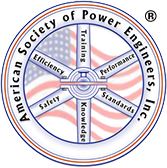Establishing National
Standards for Power Engineers.

Training and Guidelines
Click Here To View Full Slideshow
The American Society of Power Engineers, Inc. (ASOPE®) is a prominent organization dedicated to maintaining high standards in power engineering. A critical component of this endeavor is the proctoring of ASOPE® examinations, a task entrusted to qualified individuals known as Proctors. This blog post provides a comprehensive overview of the responsibilities, training, and guidelines necessary for becoming an ASOPE® Proctor.
Introduction to ASOPE® Proctoring

ASOPE® examinations are administered by Proctors, who are appointed by Regional Directors. These Proctors must register with and receive approval from ASOPE® before overseeing any examination. The organization ensures that all examination materials are supplied to Proctors and that the integrity of the testing modules is preserved.
Key Responsibilities of ASOPE® Proctors
ASOPE® Proctors have several critical responsibilities, including:
Establishing Order and Document Control:
Ensuring that all examination materials are properly handled and that the testing environment is well-organized.
Verification:
Checking that all testing applications are signed by an Examining Engineer and that the test modules match the approved ones.
Security and Integrity:
Maintaining the security of the test materials and ensuring that no exam is compromised by external influences.
Proctor Training and Approval
To qualify as an ASOPE® Proctor, individuals must complete the Proctor Registration Application and receive approval. This application is kept on record at the ASOPE® National Office, and interested candidates can obtain the form by contacting ASOPE® regional officials.
Examination Protocols
ASOPE® has stringent protocols to ensure the integrity of its examinations:
Proctor-to-Applicant Ratio:
A minimum of one Proctor is required for every 30 applicants. If the number of applicants exceeds 30, additional Proctors are needed.
Test Security:
Examination materials must be kept secure, and tests are only distributed at the time of the exam. Any breach of this protocol can result in termination of the agreement with the offending region and Proctor.
Spot Checks:
Registered Proctors are subject to random spot checks by ASOPE® officials to ensure compliance with examination protocols.
Test Site Preparation
Proctors, in collaboration with Regional Directors, are responsible for selecting appropriate testing locations. The chosen site should be quiet, well-lit, and free from external noise. During the examination, all entrances should be closed, and only number 2 wooden pencils supplied by the Proctor should be used.
Maintaining Control During Exams
Maintaining a controlled environment is crucial for the integrity of the examination. Proctors should:
- Provide clear and precise instructions to examinees
- Ensure that examinees do not begin the test until instructed
- Handle any disruptions quickly and effectively to prevent distractions and collaboration among examinees
Examination Integrity and Post-Session Protocols
ASOPE® utilizes multiple test banks for different classifications, ensuring each exam is unique. Proctors must adhere to specific procedures, including:
- Distributing test packets only to approved applicants
- Ensuring all examination materials are collected and secured after the session
- Returning all tests to ASOPE® within 30 days if they remain unopened.
Conclusion
The role of an ASOPE® Proctor is pivotal in maintaining the high standards of the ASOPE® examination process. By following the detailed guidelines and protocols, Proctors help ensure that all examinations are conducted fairly and securely, thereby upholding the integrity of the ASOPE® certification programs.
Becoming an ASOPE® Proctor is a responsibility that demands diligence, attention to detail, and a commitment to upholding the organization’s standards. For those interested in contributing to the power engineering field in this capacity, the path to becoming an ASOPE® Proctor is both challenging and rewarding.


